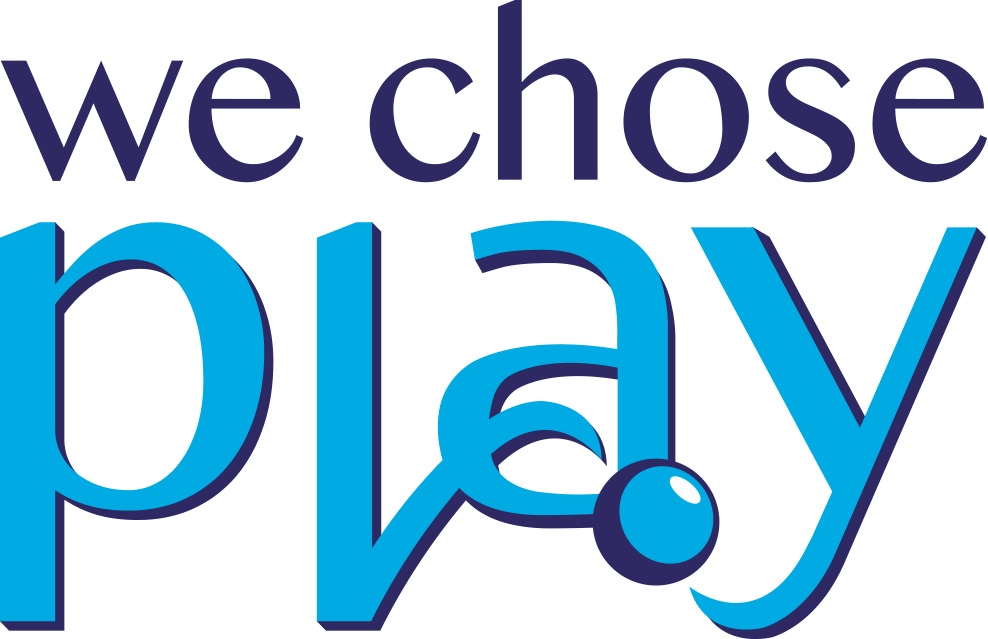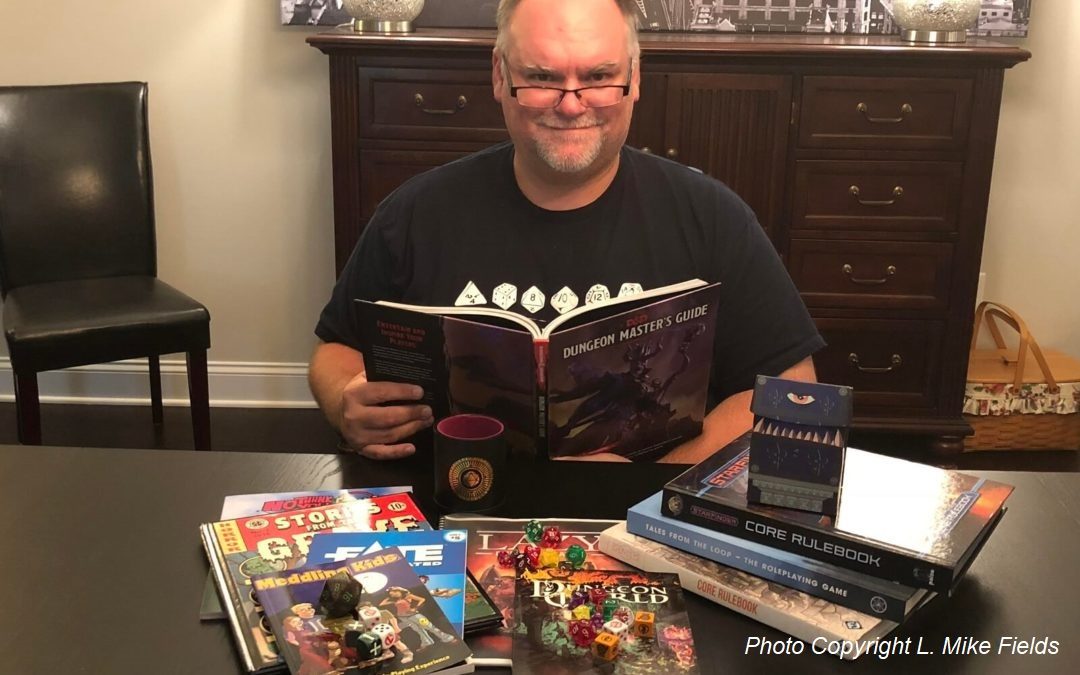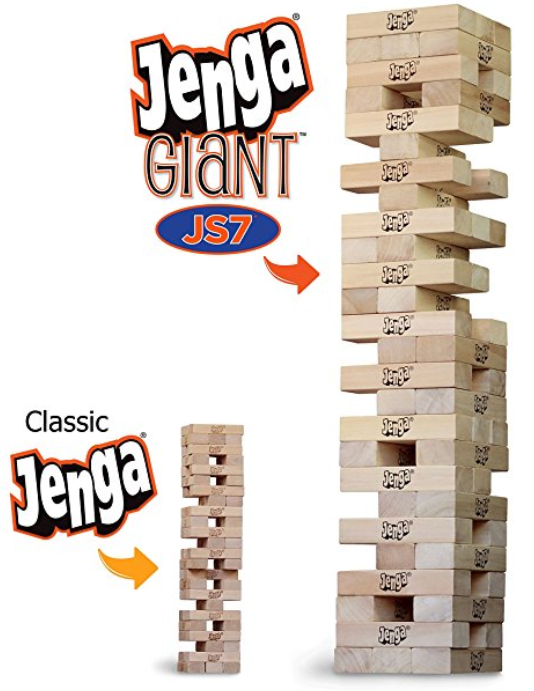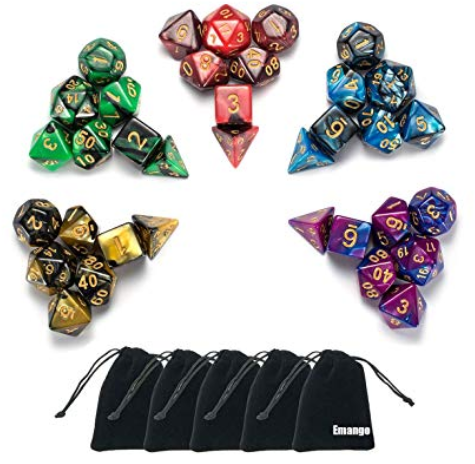I am delighted this week to share with you a wonderful interview with Atlanta Licensed Professional Counsellor and DIR Expert Training Leader, L. Mike Fields about Gaming and Floortime! I heard about him through Dave Nelson at Threshold Community Program. Like Dave, Mike got involved with DIR/Floortime because of his autistic son’s experiences. Now, he counsels other families using a DIR approach and has more recently started gaming groups. Let’s hear what he has to say!
Growth and Gaming with Mike Fields
When they told Mike that his son has autism and will have lifelong limitations, Mike thought he’d never slam dunk himself, so wondered what kind of limitations were they talking about? They couldn’t answer him. He didn’t like the focus on deficits and that lead him to the strengths-based DIR/Floortime approach, which focused on possibilities. Under the guidance of occupational therapist Dr. Mili Cordero, they have been using this approach which lead Mike to pursue his professional certifications as a counselor and a DIR Expert Training Leader with ICDL.
When Mike works with families, he always asks them, “What is your favourite thing to do with your kid?” He was shocked that so many parents couldn’t answer that because they were so focused on the deficits and trying to fix their ‘broken’ child. He tells them, “You’ve got a great kid. I can help you connect with him. We can use what they’re good at and what you’re good at to grow and to learn.“
Using gaming therapeutically
Mike grew up as a self-professed geek and nerd, loving comics, war games, video games, Star Wars, and all things related. He enjoyed the experience of being a hero in the world of games where he could feel like he fit in. Similarly, Mike works with kids who have been told that they’re broken, that they don’t fit in and need to change. So in the last year or so, Mike found out that people were using games therapeutically to help people grow.
Using assets and affinities, like Floortime, therapeutic gaming uses what kids have an emotional connection to and love to promote shared joy and growth! Mike got connected with Jack Berkenstock and the Bodhana Group and with fellow DIR Expert Training Leader Virginia Spielmann‘s Critical Core group (see their website here) which includes Adam Johns and Adam Davis from Games to Grow in Washington State. He is super excited that he can bring together two of his passions: growth and gaming!

Check out the new tabletop fantasy role-playing game, Critical Core, where play is at the heart of development! It was developed using the DIR framework and was designed specifically for youth on the autism spectrum at home or in a clinical setting. Affect Autism and The Hooded Goblin endorse Critical Core!
Seeing yourself as a hero
Mike has started running gaming groups with middle-school-aged children and teens to help them feel empowered as they grow. Mike personally likes co-operative games where the kids work together against the game rather than competitive games, since there will be enough conflict coming up in the game, anyway.
These games help the children work on social problem solving, frustration tolerance, communication. Mike gives the example of the role-playing game Dungeons & Dragons where you are the hero in that game. You get to pick what you want to be like, and act how you want to act. The game evolves and responds around that so it provides a safe opportunity to take risks and be challenged. You might have to be brave by convincing the army to join you, solve a mystery, which are real-life problems.
We create the scenarios and tailor them in the game to give kids the opportunity to process and work through those experiences like feeling successful and competent and there are studies showing that this translates out into the real world. When you feel that accomplishment that’s not just in the game, that’s you being empowered.
Gaming Floortime at home
With gaming, just like in Floortime, we want to find a way to take this experience into the family by empowering the parents, too, so they can create their own heroes and stories at home. And also like in Floortime, you will want to meet your child at their Developmental level. It’s about play so that means meeting children where they are. There are so many different games. You can find or create your own to meet the individual or group’s needs.
Some have more structure, some are more wide open (create a world, describe the world around you, etc.). You need to have Purposeful Two-Way Communication (FEDC 3 in the DIR model), some Complex Communication and Shared Problem Solving (FEDC 4), and certainly some capacity for Using Symbols and Creating Emotional Ideas (FEDC 5).
Of course, I asked about my son who is at the ‘building things and knocking them down’ stage, and Mike suggested Jenga. He gives us a few guidelines for games at home: Have a basic structure of shared interest. The real game is your interaction. The game is something to work around and help make things predictable. We all want something predictable. Anxiety about not knowing what’s going to happen is a reality for our kids.
Having those boundaries to know they’re safe opens up the opportunity to engage, communicate and to take risks. So you can add whatever level or structure they need. Turn taking can be part of the game. You can play someone builds, someone knocks it down. Play is so fundamental to what kids do. Join them where they are and build around that to add the ‘just right’ challenge to set them up for success, while still allowing them the opportunity to fail in a safe environment.
It’s Play
Gaming is about scaffolding the process of play for children. The game is the vehicle that allows them to practice the real-life scenarios in play. Play is the safe space for them to try things. For an example of why this would be so useful for our children, Mike told the story about how him and his son had to go to visit someone at the hospital.
Mike forgot something in the car so he sent his son off to the room by himself, since he’d gone there many times before. But his son went to the wrong room. In his pre-teens, his son had never had the experience of what to do if he got lost before. He’d never been alone! So he just sat down and didn’t go ask for help. It was an eye-opener for Mike!
We don’t want to see our kids fail. But by not giving him those opportunities, we are not helping them learn and grow.
In games, you can provide kids with varied experiences of being lost. Through these games you can set up these scenarios to have this good kind of repetition and practice. What if you get separated from your team in Dungeons & Dragons? Bad things can happen! Providing competence in this area will give our kids confidence and agency. With a diagnosis you get labelled and told who you are. But in these games, you get to pick which character you want to be without someone telling you who or what you are.
Mike loves the work of Joseph Campbell: myths, stories, hero’s journey and the like. Campbell points our that stories from all cultures have the same story line. There’s an individual, then an event, followed by a call to action, and the journey to growth where the individual conquers a task. These are metaphors for real life.
Adventure camps
Floortime is about the grey area
Many people think that it’s a parent’s job to ‘toughen kids up’ to push through and make them strong. But Mike says we don’t have to create opportunities to fail. The world gives this to us everyday. Safety is important. Parents are the safe space. We need attachment to grow. But growth comes through stress. We’re always in the grey area in Floortime. That is, it’s not black and white. It’s about challenging the child a little bit at a time versus on the one hand, giving up when something seems to hard, or on the other hand, forcing them right into a situation that seems too hard.
To challenge, though, you do have to put extra pressure on to grow. We have to challenge ourselves to process and think better. Emotions are the same thing too. How do we learn to handle adversity? We experience it and learn how to handle it on the other side. Sometimes we can solve a problem but sometimes we can’t, such as when a pet dies. We can build resilience. Even through the difficulty we teach our children that they aren’t alone. They’ll learn that although it was hard, they came out on the other side and will be able to do that again.
If we push them too hard, though, our children will be too overwhelmed with stress to grow. It’s about finding the middle ground. Mike gave an example from adventure camp where a boy was at first too overwhelmed. Mike helped him along and guided him and they won the game. Even though he was scared, he was able to overcome it and be successful. He gave us another example about haunted houses: If they love it, let’s go in and see what’s there! But some people don’t like being scared.
The way we challenge them is to say, “Hmm… I wonder what’s in there?” and “Hmm… What would that be like?” Instead of throwing them in there, think about it. Then you find out what’s important to the child. Find out what their challenges are and what’s scary for them. You can help them process it. “What is it about that that would be hard?” You can do it with things you fear as well! Mike is scared of heights. He’ll say to his son, “This might be easy for you, but it’s really hard for me!” It’s about normalizing the fear instead of pathologizing differences.
Impairment versus Disability
The late Atlanta-based writer, autistic self-advocate Robert Watkins, spoke of impairment versus disability. Impairment is a medical condition that limits you in some way such as cerebral palsy. Disability is something that’s typically created by society or the environment that prohibits you from being able to be engaged or interact. For example, for someone in a wheelchair it is only a disability when there aren’t ramps or elevators to be able to get around.
Mike says he doesn’t need his son to be somebody different to fit in. Being a gamer, Mike has a tribe and feels like he belongs there. Focusing on strengths and affinities helps us find out place and addresses that difference at a disability level. This includes being not only accepted, but valued too. There are great things we can do together and have fun and some tribes we don’t need to be a part of. You don’t get successful by focusing on what you’re not good at. Let’s use our strengths. Why shouldn’t we give our kids that opportunity?
Trying to fit in is too much pressure. It’s focusing on the people around him. Other people are uncomfortable with your difference so you have to change. Mike likes to make his son’s world bigger but keep his community small with people who accept and value him for who he is, giving his son a lot of opportunities and making things accessible to him–but not at the expense of his ability to regulate, feel safe, engage, and feel competent. He wants his son to find a place where he fits in rather than making him fit in where he doesn’t.
When your child is non-speaking
What’s so important to Floortime is reading our child’s cues. Sometimes we get things wrong, Mike says, and that’s part of life. Affect is central to everything: emotion. If I make a mistake, I’m sorry, he says. I messed up and I want another chance. We accept all emotions and value them, process them, and normalize them. Mike says we convey to our children “You can hate me right now, but I’m not going to leave. I know it’s important to you. We’ll try and get it right.“
Communication is so important and we always presume competence. Mike was working with a child who was really sad and it took Mike a few days to understand what the child was communicating. Mike realized that the boy was reciting a script from a cartoon that had the theme of change and feeling lost. Mike asked the boy if he was sad that he missed his parents. The boy looked at Mike and then never used the script again after that. He was understood.
We are always looking for cues, expressions, movements, actions, or looks and when you interpret any of those, you say “I saw (this…)” to the person, which gives them the chance to confirm or reject that. It makes a big difference. So in gaming, you can support those who don’t use verbal language by having a communication partner, for instance. Disability will affect the types of games you can engage in, but you can tailor the game to strengths and abilities, the way a Kickstarter campaign created a set of braille dice that were recently made available which made vision impairments not a disability by removing the barriers like this.
You can contact Mike for more information on twitter @lmikefieldsLPC, on Facebook here, or at his website here.
We hope that you enjoyed our interview today about Gaming and Floortime! If you did, please share this blog post on Facebook or Twitter via the links below. You can find the audio podcast from today’s post on iTunes and Google Play and the video podcast on YouTube. If you have any experiences to share, questions, or comments, please consider typing them in below in the Comments section.
Until next time… here’s to affecting autism through playful interactions!








